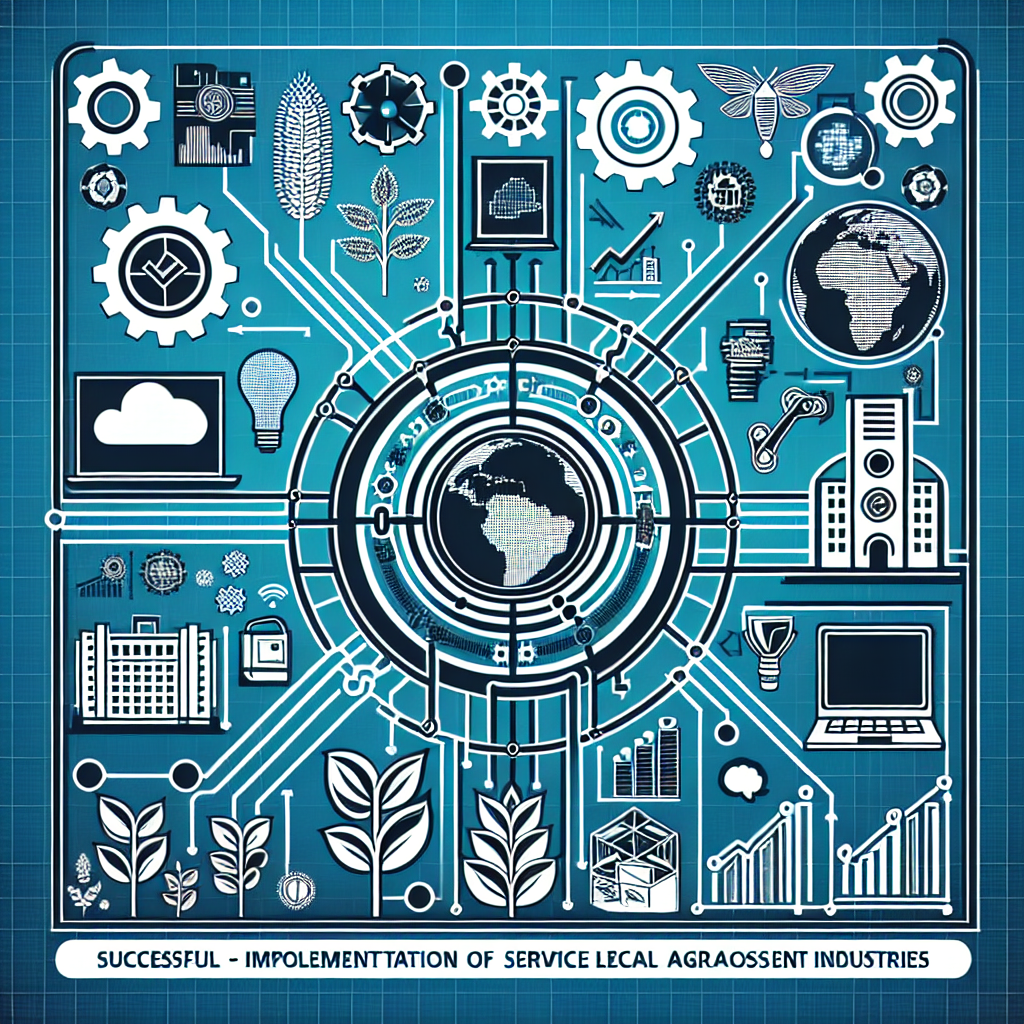Your cart is currently empty!
Tag: Service Level Agreement (SLA)
How to Create Effective Service Level Agreements for Your Company
Service Level Agreements (SLAs) are essential documents that outline the expectations and responsibilities between a service provider and a client. They ensure that both parties are on the same page regarding the level of service that will be provided and help to prevent misunderstandings or disputes in the future. Creating effective SLAs for your company is crucial for maintaining good relationships with clients and delivering high-quality service. Here are some tips on how to create effective SLAs for your company:1. Understand the needs and expectations of your clients: Before drafting an SLA, it is important to have a clear understanding of your clients’ needs and expectations. This will help you tailor the SLA to meet their specific requirements and ensure that you are able to deliver on your promises.
2. Define the scope of services: Clearly outline the scope of services that will be provided, including the specific tasks and responsibilities that are included in the agreement. This will help to prevent any misunderstandings about what is and is not covered under the SLA.
3. Set measurable performance metrics: Include specific performance metrics in the SLA that can be easily measured and monitored. This could include things like response times, resolution times, and uptime guarantees. Setting measurable metrics will help to ensure that both parties are able to track and evaluate the level of service being provided.
4. Establish consequences for non-compliance: It is important to include consequences for non-compliance with the SLA, such as penalties or termination of the agreement. This will help to incentivize both parties to meet their obligations and ensure that the SLA is taken seriously.
5. Include a process for resolving disputes: It is important to include a process for resolving disputes in the SLA, including how issues will be escalated and resolved. This will help to ensure that any conflicts are addressed in a timely and efficient manner, minimizing the impact on the client.
6. Review and update regularly: SLAs should be reviewed and updated regularly to ensure that they continue to meet the needs of both parties. As the business environment and client requirements evolve, it is important to make any necessary adjustments to the SLA to reflect these changes.
In conclusion, creating effective SLAs for your company is essential for maintaining good relationships with clients and delivering high-quality service. By understanding the needs and expectations of your clients, defining the scope of services, setting measurable performance metrics, establishing consequences for non-compliance, including a process for resolving disputes, and regularly reviewing and updating the SLA, you can ensure that your company is able to meet its obligations and provide excellent service to clients.

The Importance of Service Level Agreements (SLAs) in Business
Service Level Agreements (SLAs) are crucial for businesses as they define the level of service expected from a service provider. These agreements outline the responsibilities of both parties and ensure that expectations are clearly communicated and met. Here are some key reasons why SLAs are important in business:1. Defines Expectations: SLAs clearly outline the services to be provided, the metrics by which they will be measured, and the responsibilities of both parties. This helps to prevent misunderstandings and ensures that both parties are on the same page regarding the level of service expected.
2. Ensures Accountability: SLAs hold service providers accountable for meeting the agreed-upon performance standards. If the service provider fails to meet the agreed-upon service levels, the SLA provides a basis for recourse, such as penalties or termination of the agreement.
3. Improves Communication: SLAs facilitate open communication between the service provider and the customer. By clearly defining expectations and responsibilities, SLAs help to avoid miscommunication and ensure that both parties are aligned on the goals and objectives of the service.
4. Drives Performance: SLAs provide a framework for measuring and monitoring the performance of the service provider. By setting specific performance metrics and targets, SLAs motivate service providers to continuously improve their performance and deliver high-quality service.
5. Enhances Customer Satisfaction: SLAs help to ensure that customers receive the level of service they expect. By setting clear expectations and holding service providers accountable for meeting those expectations, SLAs help to build trust and confidence with customers, leading to higher levels of satisfaction and loyalty.
6. Mitigates Risks: SLAs help to mitigate risks by establishing clear guidelines for service delivery and performance. By outlining the consequences of failing to meet the agreed-upon service levels, SLAs help to protect both parties from potential disputes and financial losses.
In conclusion, Service Level Agreements are essential in business as they define expectations, ensure accountability, improve communication, drive performance, enhance customer satisfaction, and mitigate risks. By establishing clear guidelines for service delivery and performance, SLAs help to build strong and successful partnerships between service providers and customers. Businesses that prioritize SLAs are more likely to deliver high-quality service, meet customer expectations, and achieve long-term success.

Case Studies: Successful Implementation of Service Level Agreements in Various Industries
Service Level Agreements (SLAs) are a crucial component of any business relationship, outlining the expectations and responsibilities of both parties involved. By clearly defining the services to be provided, the quality standards to be met, and the consequences for failing to meet those standards, SLAs help ensure that both parties are on the same page and working towards the same goals.In various industries, successful implementation of SLAs has led to improved customer satisfaction, increased efficiency, and stronger partnerships between service providers and their clients. Let’s take a look at some case studies that highlight the successful implementation of SLAs in different industries:
1. IT Services Industry:
A leading IT services company implemented SLAs with their clients to outline the response times for resolving technical issues, the uptime guarantees for their systems, and the penalties for any service disruptions. By clearly defining these expectations upfront, the company was able to improve the efficiency of their operations, reduce downtime, and increase customer satisfaction. As a result, their client retention rates improved, and they were able to expand their customer base through positive referrals.
2. Healthcare Industry:
A large hospital system implemented SLAs with their vendors to ensure timely delivery of medical supplies, maintenance of critical equipment, and compliance with regulatory requirements. By setting clear expectations and holding vendors accountable for meeting those expectations, the hospital system was able to streamline their procurement processes, reduce costs, and improve patient care outcomes. The SLAs also helped foster a strong partnership between the hospital system and their vendors, leading to better communication and collaboration.
3. Financial Services Industry:
A major financial institution implemented SLAs with their third-party service providers to ensure the security and confidentiality of customer data, compliance with industry regulations, and timely resolution of any issues. By establishing these SLAs, the financial institution was able to mitigate risks, protect their customers’ sensitive information, and maintain a high level of trust with their clients. The SLAs also helped the institution demonstrate their commitment to compliance and security to regulators and investors.
In conclusion, the successful implementation of SLAs in various industries has proven to be a valuable tool for improving efficiency, managing risks, and enhancing customer satisfaction. By setting clear expectations, measuring performance against those expectations, and holding parties accountable for meeting their obligations, businesses can build stronger partnerships, drive operational excellence, and achieve their strategic goals. Whether in IT services, healthcare, financial services, or any other industry, SLAs play a critical role in ensuring the success of business relationships.

The Role of Service Level Agreements in Improving Customer Satisfaction
Service Level Agreements (SLAs) are essential tools for ensuring that businesses meet their customers’ needs and expectations. A Service Level Agreement is a contract between a service provider and a customer that defines the level of service that will be provided and the metrics by which that service will be measured. By clearly outlining the expectations and responsibilities of both parties, SLAs help to establish a framework for delivering high-quality service and improving customer satisfaction.One of the key roles of SLAs in improving customer satisfaction is setting clear expectations. By clearly defining the services that will be provided, the level of performance that can be expected, and the metrics that will be used to measure that performance, SLAs help to eliminate any confusion or misunderstandings between the service provider and the customer. This transparency helps to build trust and confidence in the relationship, as customers know exactly what to expect and can hold the service provider accountable for meeting those expectations.
SLAs also play a crucial role in improving communication and collaboration between the service provider and the customer. By establishing regular communication channels, such as regular performance reviews or quarterly business reviews, SLAs help to ensure that both parties are on the same page and can address any issues or concerns in a timely manner. This proactive approach to communication helps to prevent misunderstandings and allows for quick resolution of any problems that may arise, ultimately leading to higher levels of customer satisfaction.
Furthermore, SLAs help to drive continuous improvement and innovation in service delivery. By setting specific performance metrics and targets, SLAs provide a clear roadmap for both the service provider and the customer to work towards. This focus on continuous improvement encourages the service provider to constantly evaluate and enhance their processes and systems, leading to higher levels of efficiency and effectiveness in delivering services. In turn, this results in higher levels of customer satisfaction as customers benefit from improved service quality and reliability.
In conclusion, Service Level Agreements play a critical role in improving customer satisfaction by setting clear expectations, enhancing communication and collaboration, and driving continuous improvement in service delivery. By establishing a framework for delivering high-quality service and holding both parties accountable for meeting their obligations, SLAs help to build trust and confidence in the relationship between the service provider and the customer. Ultimately, businesses that leverage SLAs effectively are better positioned to meet their customers’ needs and expectations, leading to increased customer satisfaction and loyalty.

Ensuring Compliance with Service Level Agreements: Best Practices
Service Level Agreements (SLAs) are crucial in ensuring that both parties – the service provider and the client – are on the same page when it comes to expectations and deliverables. SLAs outline the terms and conditions of the service that will be provided, including the level of service, response times, and support that will be offered. However, simply having an SLA in place is not enough; it is essential to ensure compliance with the SLA to maintain a positive relationship with the client and uphold the reputation of the service provider. Here are some best practices to ensure compliance with SLAs:1. Clear communication: The first step to ensuring compliance with an SLA is to have clear and open communication with the client. Make sure that both parties understand the terms and conditions of the SLA, including the scope of services, response times, and any penalties for non-compliance. Regular communication with the client can help to address any issues or concerns before they escalate.
2. Define measurable metrics: In order to track compliance with the SLA, it is important to define measurable metrics that can be monitored and measured. This could include metrics such as response times, uptime, and resolution times. By setting clear and achievable metrics, both parties can easily track performance and identify any areas that need improvement.
3. Monitor performance: Regularly monitoring performance against the SLA metrics is essential to ensure compliance. This can be done through regular reporting and analysis of key performance indicators. By monitoring performance, any deviations from the SLA can be identified and addressed promptly.
4. Implement a feedback mechanism: It is important to have a feedback mechanism in place to gather input from the client on the service provided. This could include regular surveys or feedback forms that allow the client to provide input on their satisfaction with the service. By gathering feedback, the service provider can identify any areas for improvement and make necessary adjustments to ensure compliance with the SLA.
5. Continuous improvement: Compliance with an SLA is an ongoing process that requires continuous improvement. By regularly reviewing performance against the SLA metrics and implementing changes as needed, the service provider can ensure that they are meeting the expectations of the client. This could include investing in new technologies, training staff, or revising processes to improve service delivery.
In conclusion, ensuring compliance with SLAs is essential for maintaining a positive relationship with clients and upholding the reputation of the service provider. By following best practices such as clear communication, defining measurable metrics, monitoring performance, implementing a feedback mechanism, and continuous improvement, service providers can ensure that they are meeting the expectations outlined in the SLA. By doing so, both parties can benefit from a successful and mutually beneficial partnership.

Tips for Reviewing and Updating Service Level Agreements (SLAs) Regularly
Service Level Agreements (SLAs) are a crucial component of any business that provides services to customers. They outline the expectations and responsibilities of both parties, ensuring that services are delivered efficiently and effectively. However, as business environments and customer needs evolve, it is important to regularly review and update SLAs to ensure they remain relevant and effective. Below are some tips for reviewing and updating SLAs regularly:1. Schedule Regular Reviews: Set a schedule for reviewing SLAs at least once a year, or more frequently if needed. This will ensure that SLAs are updated in a timely manner to reflect any changes in the business or industry.
2. Involve Stakeholders: When reviewing SLAs, it is important to involve all stakeholders, including customers, service providers, and internal teams. This will help ensure that all parties are aligned on expectations and requirements.
3. Assess Performance Metrics: Review performance metrics outlined in the SLA to ensure they are still relevant and measurable. Consider adding new metrics or adjusting existing ones to better reflect the goals of the business.
4. Identify Areas for Improvement: Use the review process to identify any areas for improvement in the SLA. This could include clarifying language, updating service levels, or adding new services that have been introduced since the last review.
5. Update Contact Information: Ensure that all contact information in the SLA is up to date, including key personnel and escalation points. This will help facilitate communication and issue resolution in a timely manner.
6. Review Legal and Compliance Requirements: Review the SLA to ensure it complies with any legal or regulatory requirements that may have changed since the last review. This will help protect both parties from potential legal issues.
7. Communicate Changes: Once the review and updates are complete, communicate any changes to all parties involved. This will help ensure that everyone is aware of the updated SLA and can adjust their processes accordingly.
In conclusion, regularly reviewing and updating SLAs is essential to ensuring that services are delivered effectively and efficiently. By following these tips, businesses can ensure that their SLAs remain relevant and beneficial to all parties involved.

Negotiating Service Level Agreements (SLAs) with Vendors and Partners
Negotiating Service Level Agreements (SLAs) with vendors and partners is a critical aspect of any business relationship. An SLA is a formal contract that outlines the expectations, responsibilities, and deliverables of both parties involved in a business partnership. It sets clear guidelines for the level of service that is expected, as well as the consequences if those expectations are not met.When negotiating an SLA with a vendor or partner, there are several key factors to consider. The first step is to clearly define the scope of the agreement. This includes outlining the specific services that will be provided, the expected outcomes, and the timeline for delivery. It is important to be as specific as possible in defining these terms to avoid any misunderstandings or disputes later on.
Another important consideration when negotiating an SLA is to establish measurable performance metrics. This could include metrics such as response time, resolution time, uptime, and customer satisfaction. These metrics should be realistic and achievable, and should be regularly monitored and reviewed to ensure that both parties are meeting their obligations.
In addition to performance metrics, it is also important to include provisions for escalation and dispute resolution in the SLA. This ensures that any issues or disagreements that arise during the course of the partnership can be resolved in a timely and fair manner. It is also important to include provisions for regular review and amendment of the SLA to ensure that it remains relevant and effective over time.
When negotiating an SLA, it is important to be clear and transparent about expectations and requirements. Both parties should have a clear understanding of their roles and responsibilities, as well as the consequences of failing to meet those obligations. It is also important to establish a strong line of communication between both parties to ensure that any issues or concerns are addressed promptly and effectively.
In conclusion, negotiating Service Level Agreements with vendors and partners is a crucial step in establishing a successful business relationship. By clearly defining the scope of the agreement, establishing measurable performance metrics, and including provisions for escalation and dispute resolution, businesses can ensure that both parties are meeting their obligations and delivering the level of service expected. By following these guidelines, businesses can establish strong and productive partnerships that benefit both parties involved.

Key Components of a Successful Service Level Agreement (SLA)
A Service Level Agreement (SLA) is a crucial document that outlines the expectations and responsibilities of both parties in a service provider-client relationship. A well-crafted SLA can help ensure that both parties are on the same page and can help prevent misunderstandings and disputes down the line. Here are some key components of a successful SLA:1. Service Description: The SLA should clearly outline the services that will be provided by the service provider. This includes a detailed description of the scope of work, the expected deliverables, and any limitations or exclusions.
2. Service Level Objectives (SLOs): SLOs define the expected level of service that the provider will deliver. This may include metrics such as uptime, response times, and resolution times. SLOs should be realistic and measurable to ensure that both parties can track performance and hold each other accountable.
3. Performance Metrics: It is important to include specific performance metrics in the SLA that will be used to measure the provider’s performance. This may include metrics such as availability, response time, resolution time, and customer satisfaction. These metrics should be clear, objective, and easily measurable.
4. Responsibilities and Duties: The SLA should clearly outline the responsibilities and duties of both parties. This includes the responsibilities of the service provider in delivering the services, as well as the responsibilities of the client in providing necessary information and access. Clear delineation of responsibilities can help prevent misunderstandings and ensure that both parties are aware of their obligations.
5. Escalation Procedures: In the event of a service issue or dispute, it is important to have clear escalation procedures in place. This may include a hierarchy of contacts, a process for escalating issues, and timelines for resolution. Having clear escalation procedures can help ensure that issues are addressed in a timely manner and that both parties are on the same page.
6. Service Level Credits: In the event that the service provider fails to meet the agreed-upon SLOs, the SLA should outline the process for issuing service level credits. This may include a formula for calculating credits, timelines for issuing credits, and any limitations on credits. Service level credits can help incentivize the provider to meet their obligations and compensate the client for any service failures.
In conclusion, a successful SLA should be clear, comprehensive, and measurable. By including key components such as service description, SLOs, performance metrics, responsibilities, escalation procedures, and service level credits, both parties can ensure a successful and productive working relationship. A well-crafted SLA can help set expectations, prevent misunderstandings, and ensure that both parties are working towards a common goal.

How to Craft an Effective Service Level Agreement (SLA)
A Service Level Agreement (SLA) is a crucial document that outlines the expectations and responsibilities of both parties in a service provider-client relationship. It serves as a roadmap for the service provider to deliver the promised services and for the client to receive the expected level of service. Crafting an effective SLA is essential to ensure clear communication, accountability, and mutual understanding between both parties. Here are some key steps to help you craft an effective SLA:1. Define clear objectives and goals: Before you start drafting the SLA, it’s important to clearly define the objectives and goals of the services being provided. This will help you set realistic expectations and ensure that both parties are on the same page.
2. Identify key metrics and performance indicators: It’s essential to identify the key metrics and performance indicators that will be used to measure the success of the services being provided. This could include metrics such as response time, uptime, resolution time, and customer satisfaction.
3. Set realistic targets and timelines: When setting targets and timelines in the SLA, it’s important to be realistic and achievable. Unrealistic targets can lead to dissatisfaction and frustration on both sides. It’s also important to build in some flexibility to account for unforeseen circumstances.
4. Define roles and responsibilities: Clearly outline the roles and responsibilities of both parties in the SLA. This will help prevent misunderstandings and ensure that everyone knows what is expected of them.
5. Include escalation procedures: It’s important to include escalation procedures in the SLA in case any issues or disputes arise. This will help resolve conflicts quickly and ensure that the services are delivered smoothly.
6. Review and revise regularly: Once the SLA is in place, it’s important to review and revise it regularly to ensure that it remains relevant and effective. As the business evolves and changes, the SLA may need to be updated to reflect these changes.
In conclusion, crafting an effective SLA is essential for a successful service provider-client relationship. By defining clear objectives, setting realistic targets, and outlining roles and responsibilities, you can ensure that both parties are on the same page and working towards a common goal. Regularly reviewing and revising the SLA will help keep it up to date and ensure that the services are delivered as promised.

Understanding the Importance of Service Level Agreements (SLAs) in Business Relationships
Service Level Agreements (SLAs) are crucial documents that outline the expectations and responsibilities of both parties in a business relationship. These agreements are essential for setting clear guidelines for the delivery of services and ensuring that both parties are on the same page.SLAs are particularly important in today’s fast-paced business environment, where companies rely on a wide range of services to operate efficiently. Whether it’s IT services, marketing services, or customer support, having a well-defined SLA in place can help avoid misunderstandings and disputes that can arise when expectations are not clearly communicated.
One of the key benefits of SLAs is that they provide a framework for measuring the performance of service providers. By establishing specific metrics and targets, businesses can track the quality and efficiency of the services they receive. This not only helps in holding service providers accountable but also enables businesses to identify areas for improvement and make informed decisions about their service providers.
SLAs also play a crucial role in managing risk in business relationships. By clearly outlining the responsibilities and liabilities of both parties, SLAs can help mitigate potential disputes and protect both parties in the event of a breach of contract. This can be particularly important when dealing with critical services that can have a significant impact on a business’s operations.
Furthermore, SLAs can help businesses build trust and strengthen relationships with their service providers. By clearly defining expectations and establishing a framework for communication and collaboration, SLAs can help foster a more transparent and productive working relationship. This, in turn, can lead to improved service delivery and greater satisfaction for both parties.
In conclusion, Service Level Agreements are essential tools for managing business relationships and ensuring the smooth delivery of services. By clearly defining expectations, measuring performance, and managing risk, SLAs can help businesses build stronger, more productive relationships with their service providers. Investing the time and effort to create well-crafted SLAs can pay off in the long run, leading to more efficient operations, better outcomes, and ultimately, greater success for your business.
